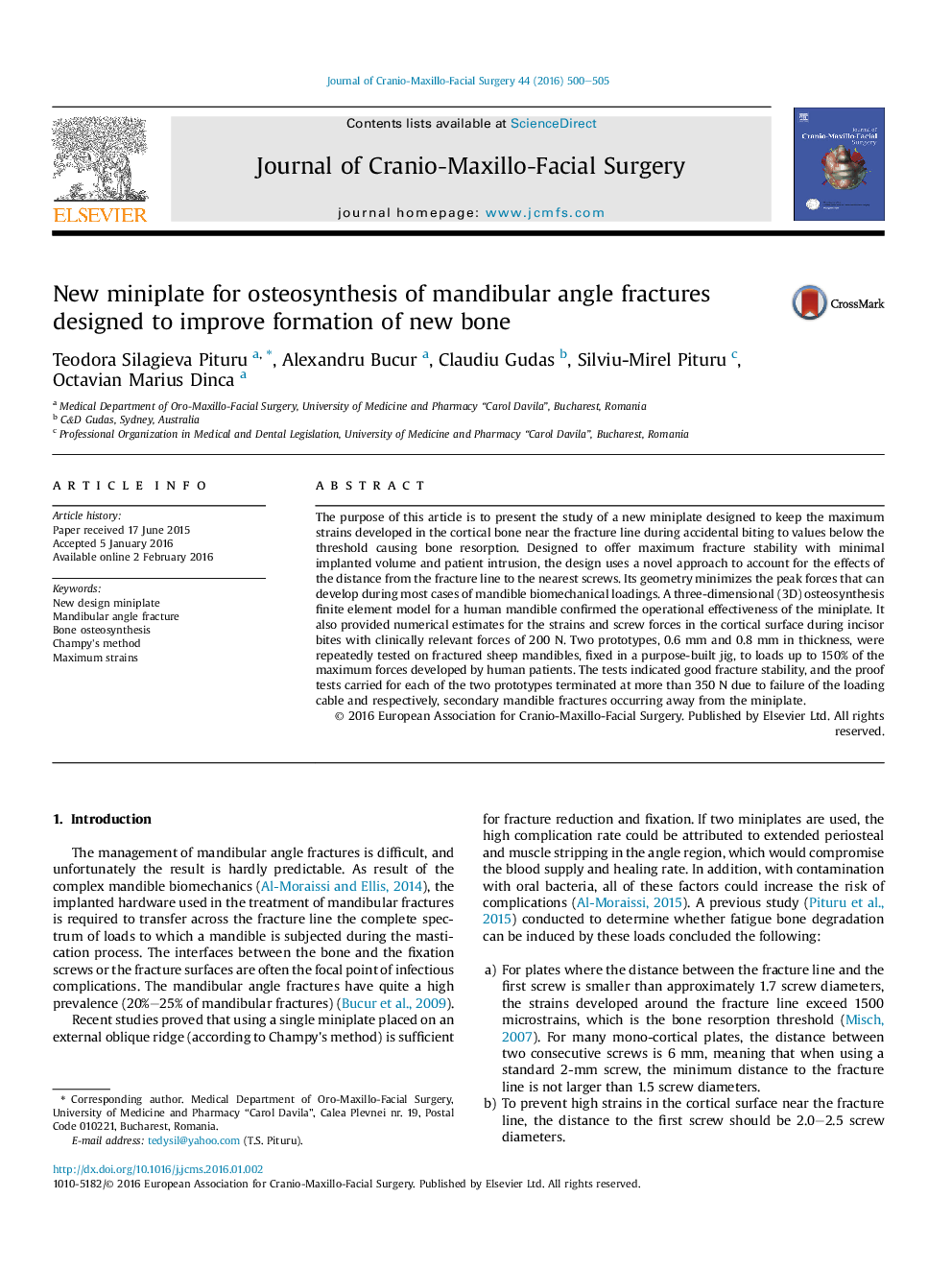| Article ID | Journal | Published Year | Pages | File Type |
|---|---|---|---|---|
| 3142491 | Journal of Cranio-Maxillofacial Surgery | 2016 | 6 Pages |
The purpose of this article is to present the study of a new miniplate designed to keep the maximum strains developed in the cortical bone near the fracture line during accidental biting to values below the threshold causing bone resorption. Designed to offer maximum fracture stability with minimal implanted volume and patient intrusion, the design uses a novel approach to account for the effects of the distance from the fracture line to the nearest screws. Its geometry minimizes the peak forces that can develop during most cases of mandible biomechanical loadings. A three-dimensional (3D) osteosynthesis finite element model for a human mandible confirmed the operational effectiveness of the miniplate. It also provided numerical estimates for the strains and screw forces in the cortical surface during incisor bites with clinically relevant forces of 200 N. Two prototypes, 0.6 mm and 0.8 mm in thickness, were repeatedly tested on fractured sheep mandibles, fixed in a purpose-built jig, to loads up to 150% of the maximum forces developed by human patients. The tests indicated good fracture stability, and the proof tests carried for each of the two prototypes terminated at more than 350 N due to failure of the loading cable and respectively, secondary mandible fractures occurring away from the miniplate.
